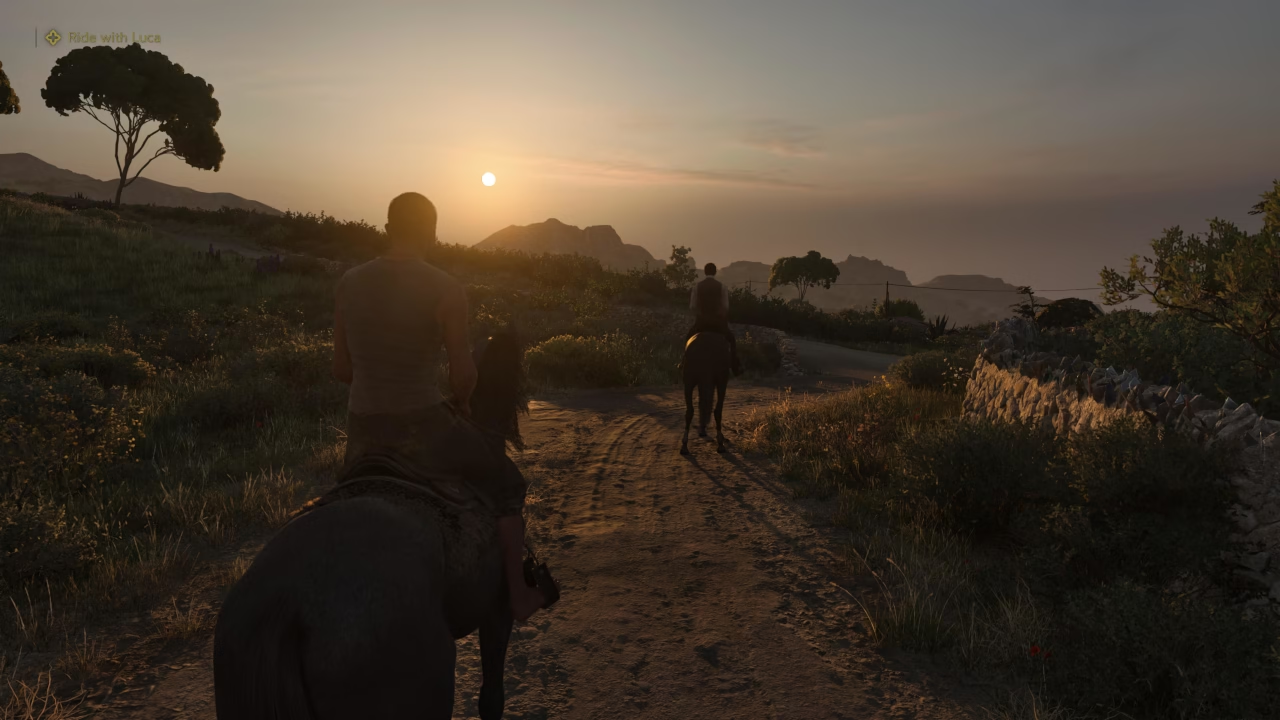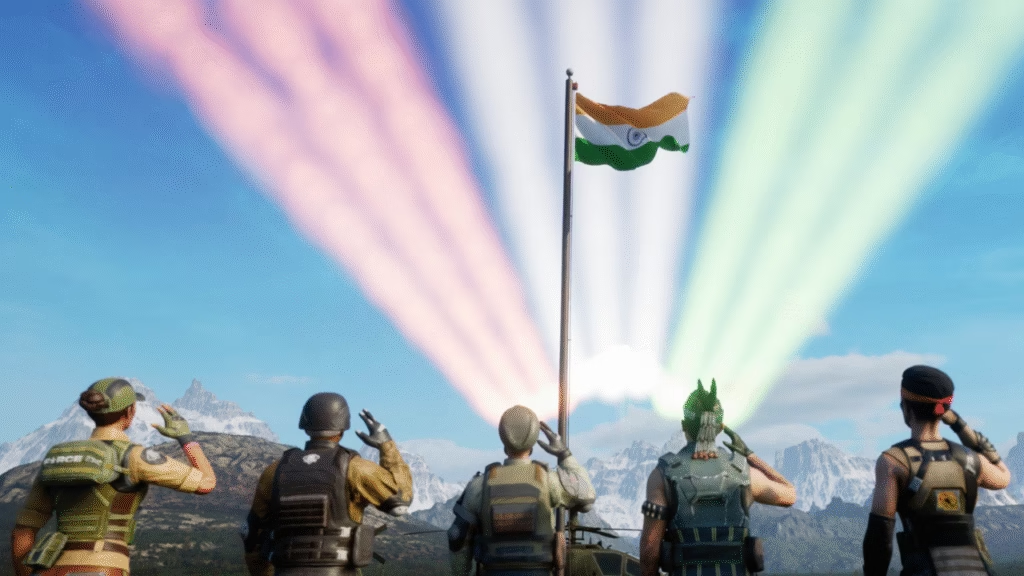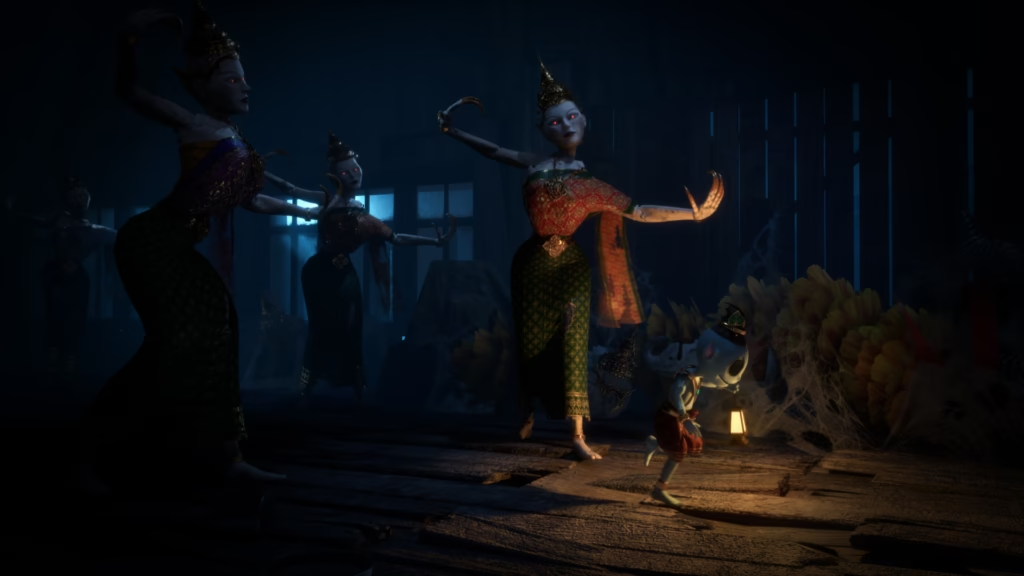Almost a quarter-century since the first game, and five years since its remake (not to mention two sequels in 2010 and 2016), the Mafia series marked a return this year with a new storyline, and perhaps fittingly for our franchise-obsessed times, a prequel to where it all started. In the intervening years since I first played the original in 2002 (on what today would be considered a potato rig), much has changed of course. Not only in the context of technology and game mechanics — and how a project can be pushed using both in wildly creative ways — but storytelling as well, how it has evolved within the sphere of games. Alas, like many of its characters, Mafia: The Old Country seems to be stuck in the past on many of these accounts.
Developed by Hangar 13, the studio behind the middling Mafia III and the well-received Mafia: Definitive Edition, the game this time around is set in a fictionalised Sicily in the early 1900s, and charts the exploits and rise of Enzo Favara, a carusu (a “mine-boy” here), in the Torrisi crime family. But the change in time and scenery is mostly as far as the game goes in terms of novelty, as it holds tight to the beats of the original, bereft of any confidence in trying something new. For those familiar with the Star Wars saga, The Old Country is to Mafia what The Force Awakens was to A New Hope.
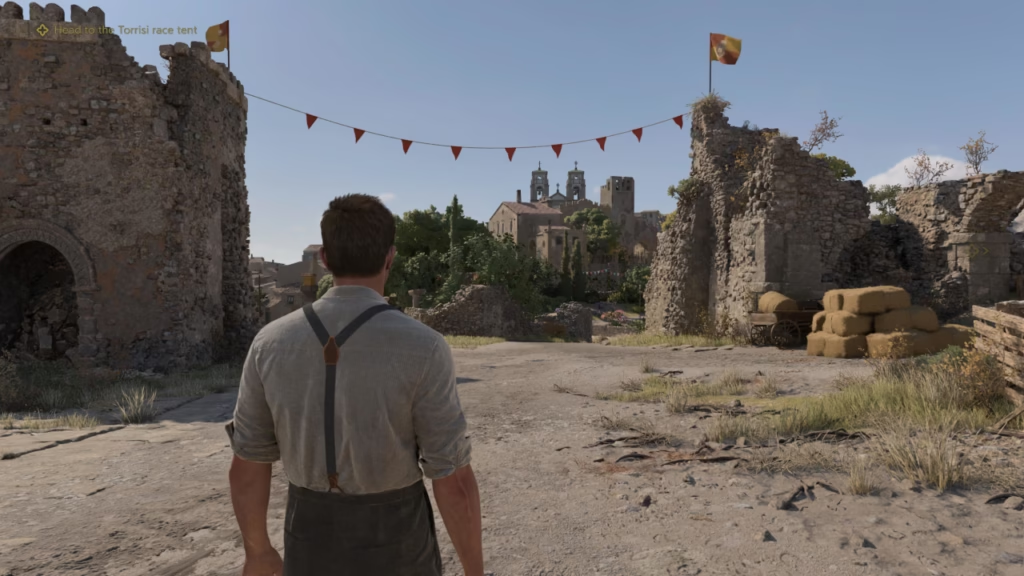
Now since we mentioned the time and the setting, let’s get that out of the way first. Arguably the biggest draw for the title, and one of which it can be most proud, the game looks beautiful and features a couple of gorgeous-looking set pieces (and for some sequences, the only thing that makes them stand out is the environmental design). While sparsely populated, Sicily looks its golden hour best with its rolling hills, open spaces and vineyards. Where there are structures, whether a singular villa or church, a cluster of builds or a village, a bustling town or ruins of old, the architecture and design looks carefully crafted, almost Johannes Vermeer-esque, and it’s a joy to wander around leisurely. In fact, it often crossed my mind during the playthrough, how perfect the setting would be for a cosy game, perhaps some wine-management sim (which in a twisted way, the game already is to a degree).
While I was at times tempted to compare the sparser parts of landscapes to the same featured in the likes of Assassin’s Creed Odyssey, Red Dead Redemption 2, or even a few levels from Uncharted 4: A Thief’s End, this is a game on a different scale altogether. Contained and semi-open-world, it does well with the smaller margins at hand, and while it doesn’t quite match up to them, it would be unfair to pit it against giants of industry with far more experience and resources. There does come a time when you begin to feel like you are just circling around the same places, but the game — which is linear and only about a dozen or so hours long — is over before it becomes bothersome. There is some amount of texture popping and frame drops, but nothing that would take you out of the game or couldn’t be fixed in a future patch.
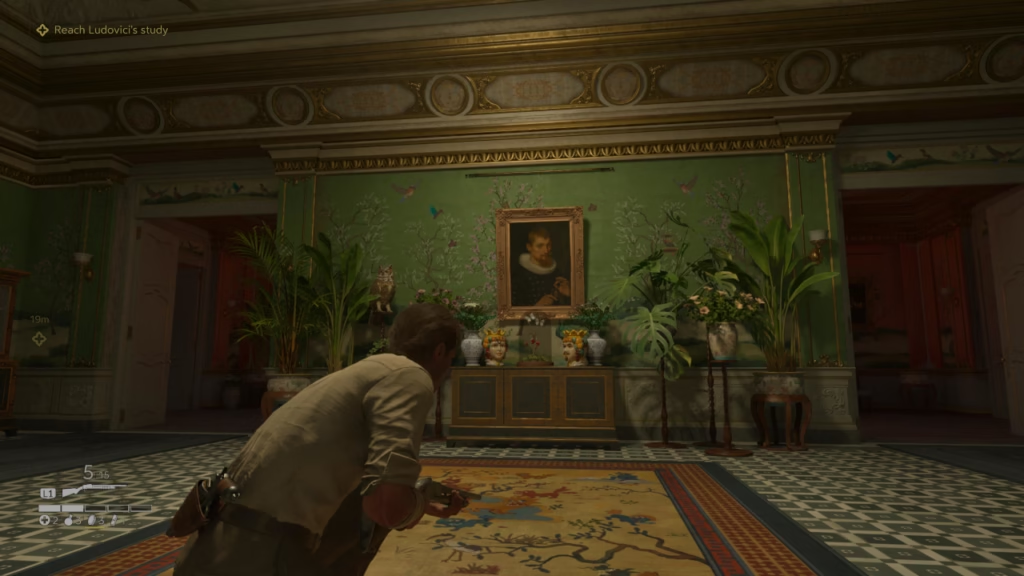
And speaking of going in circles (and while we like to keep things spoiler-free here), the game features one of the best car races you’ll ever come across in a non-racing videogame. In a title that often goes out of its way to shoehorn in some racing, it’s a masterfully put together level that not only looks absolutely beautiful and is giddy-with-joy to play, it also harks back to the time when cheating was rife not only in motor racing, but also the likes of Tour de France. A nice little offering.
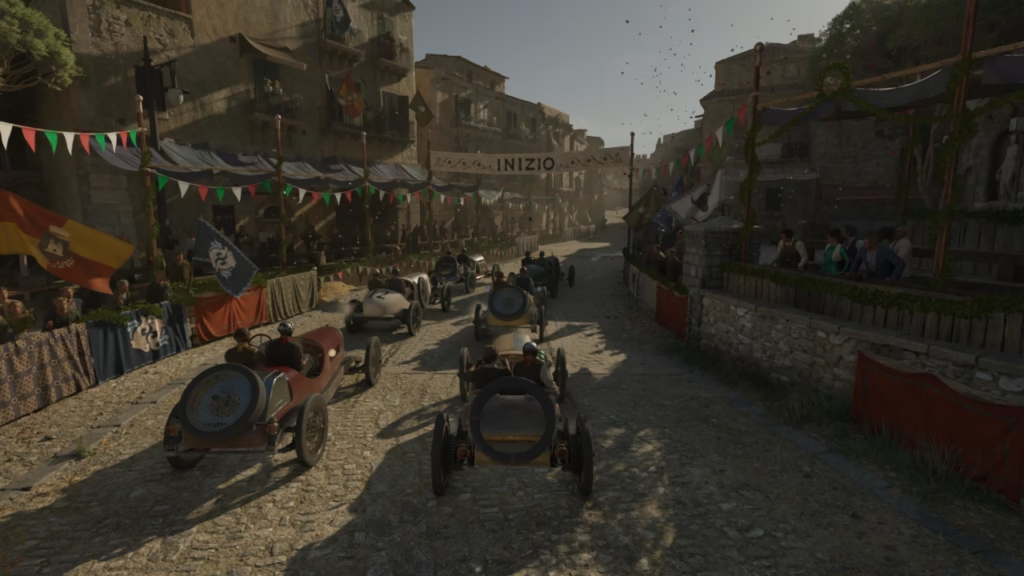
But the beauty of it all is only the canvas on which a violent story of family, loyalty, power and love play out in all its clichés and melodramatic overtones. Forget having played the original (or its remaster for that matter), if you have consumed any fictional media that relates to organised crime or the mafia — whether in the form of films, television or books — the game is so incredibly predictable that it seems less like venturing into a fresh story and more like going through the motions. So much so that it feels like the writers were given a brief to just stick to the blueprints from the first title and do as little as possible outside those set constraints and classic (read: worn out) expectations of the genre. Whether it’s the aforementioned race(s) or raiding warehouses or the protagonist’s rise up the ranks (and numerous other would-be-spoiler plots), you can see it all coming miles away from the beginning to the very end.
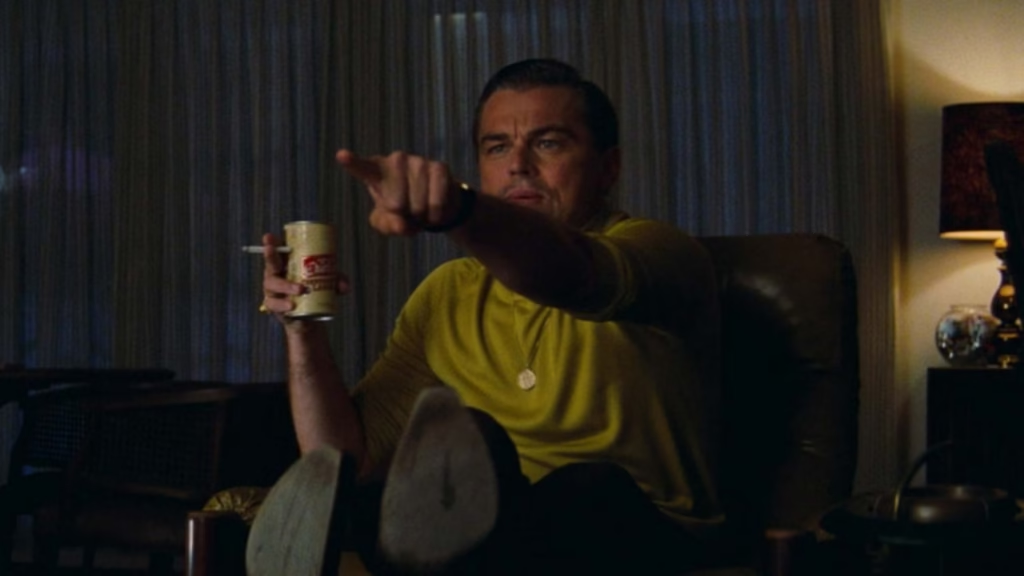
Things don’t pan out much well for the characters themselves. Not unlike the original, the protagonist has just enough personality and likeability for you to play along, which is not always a bad thing in games when you’re stepping into a character’s shoes, giving you a neutral palette of sorts. But in a game whose central premise and motivations revolves around the struggle between the right and the wrong, Favara more often than not comes across as blank. Most others feel like caricatures of the well-established genre archetypes reading lines for a stage play. You already know who these people are, their roles and what will come out of their mouths. No subversion or surprises here. If anyone, it’s Don Torrisi, the head of the family played by Johnny Santiago, who steals every scene he is in with his raspy voice and reserved mannerisms (think a young Vito Corleone), at least for a while.
Beneath all the worn-out dealings, there are a few instances where the game hints at something more: It never quite lets you forget that your character is little more than a disposable henchman for the Don, even as you join the “family” and climb up in life. It sidesteps the glamorisation much more consistently than a lot of similar works. You know what you do, who you do it for, and perhaps most importantly, where you really stand at all times. (Come to think of it — your contemporary corporate 9-to-5, with more murder.) Then there are the ever-present religious undertones (again, far from anything new, but a little more fleshed-out). The hypocrisy of church-going mafia playing the roles of “protectors” in the society. One wonders how much bloodshed and drama could be avoided only if the characters stopped going to the churches or making confessions not only in these games, but the genre in general.
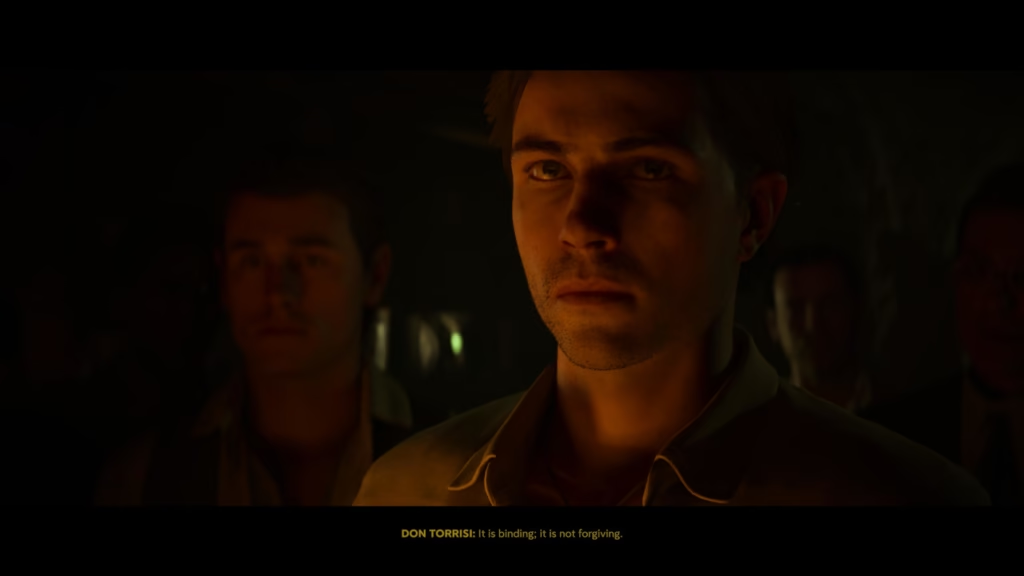
And if you were wondering why we haven’t talked about the gameplay yet, well, there is not much to say. It’s your standard affair of cover-and-shoot, rudimentary stealth mechanics, and an expected batch of standard weapons and cars to play with. There is also a system which helps you add a few extra capabilities to your base stats, like the ability to loot quicker, or hold out for a little longer if you’re about to die, which you can pick and choose. But most of this is rendered uninteresting by a simple fact — the game is too easy. Now, we here at Story Mode are no fans of the git gud mindset, but even on the balanced (or recommended) mode you can fairly easily finish the game without dying. No weapons upgrades or purchases necessary. The only few times I did die during my playthrough was when I was too busy looting someone as half a dozen people were shooting at me. Grab a pump action shotgun and it’s basically God Mode (you’d be surprised how far it can get someone). You can take on the entire Sicily.
Then there are the clumsy knife fights. It’s a whole system of its own where you take on someone one-on-one. You can swing, stab, parry, dodge, and break someone’s stand. But all you really need to do is spam R1 (on a PlayStation) and you will not lose a fight in your life. What’s more baffling is how seriously the game takes this mechanic, making it a centerpiece. Every single “boss fight” is a knife fight, and most of the time for no reason at all.
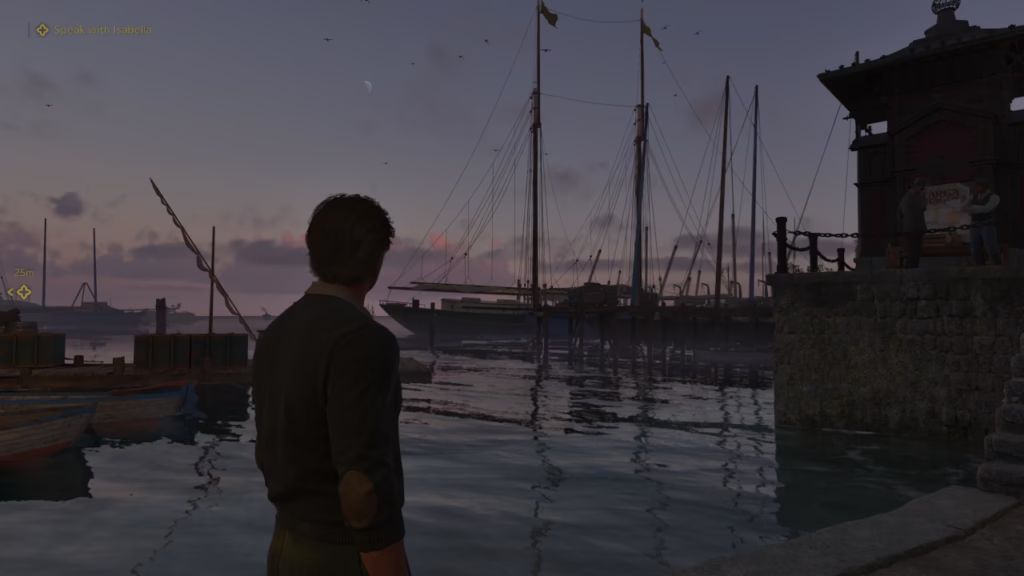
So where does it all leave us? A polished AA game with a beautiful setting, but little else to offer in terms of novelty. If you are a fan of the genre or the game series, you might have a good time if you’re looking for more of the same. For newcomers, it can be a decent entry into the franchise, that doesn’t require too much time commitment (took me 14 hours to finish at leisurely pace; no drives or rides skipped). But your best bet would be to wait for the game to go on sale.
Game reviewed on PlayStation 5. Review code provided by publisher
All images via screengrabs from the game (except the Rick Dalton meme, of course).
